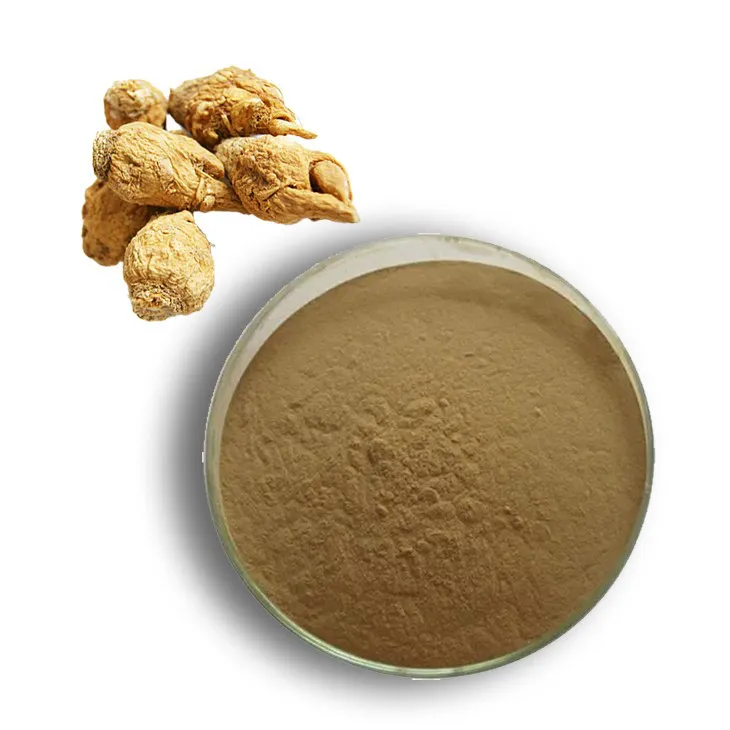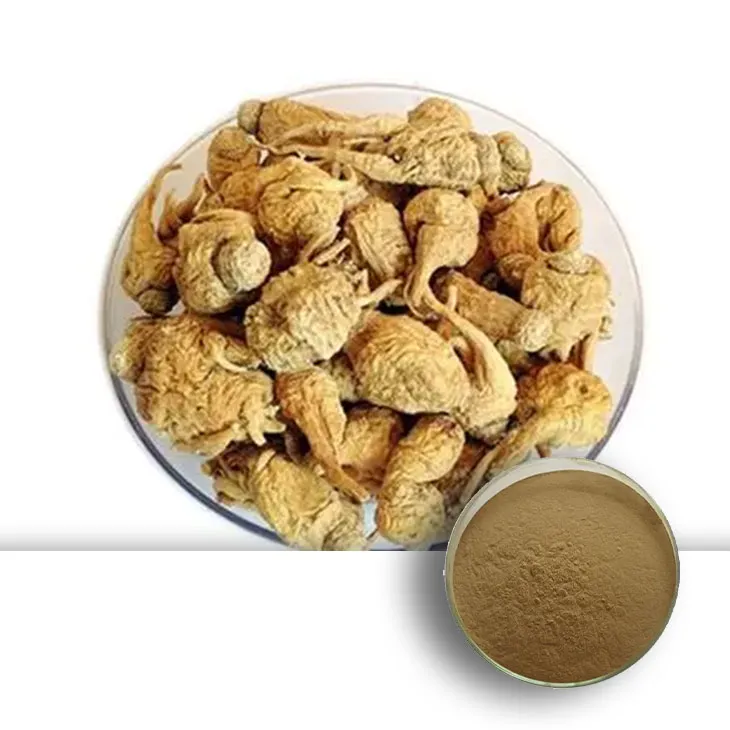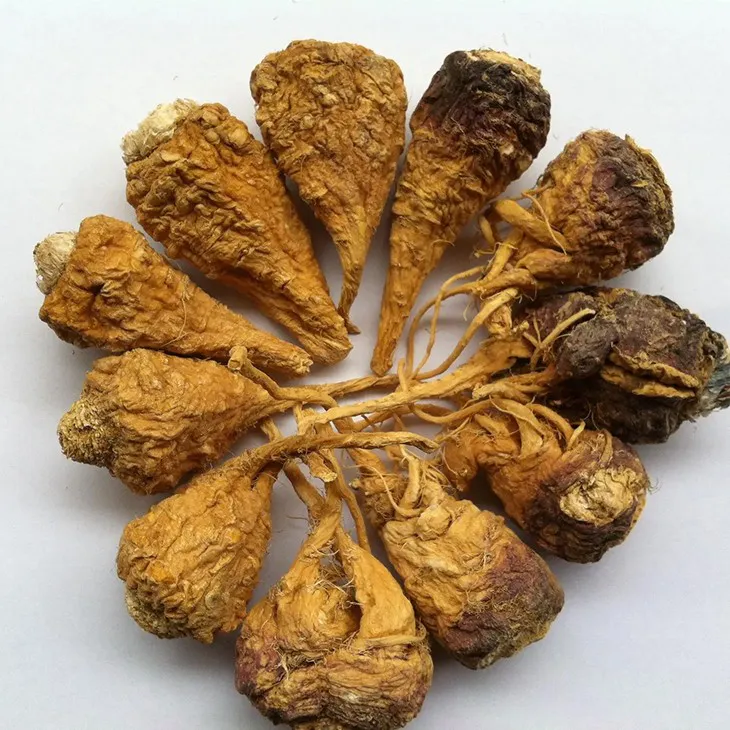- 0086-571-85302990
- sales@greenskybio.com
Benefits of Maca Extract in Cattle Feed.
2024-11-14

1. Introduction
In the field of cattle farming, the quality of feed plays a crucial role in determining the overall health, growth, and productivity of cattle. Maca Extract has emerged as a potential additive in cattle feed with a variety of beneficial effects. Maca, a plant native to the high altitudes of the Andes in Peru, has been used for centuries for its medicinal properties. In recent years, its extract has been studied for its application in animal nutrition, especially in cattle feed.

2. Improvement of Beef Quality
2.1 Influence on Fat Deposition
- Maca Extract has the ability to modulate the fat deposition in cattle. It can regulate the metabolism of lipids in the body of cattle. Through certain bioactive compounds present in it, it can affect the way fat is stored in the adipose tissue. This is important as the distribution and type of fat in beef significantly impact its quality.
- For example, a proper fat deposition pattern can lead to a marbling effect in beef. Marbling - the intramuscular fat - is highly desired in high - quality beef. Maca Extract can help in achieving a more desirable marbling pattern, which not only makes the beef look more appealing but also contributes to its juiciness and flavor.
- The muscle fiber characteristics of cattle are also influenced by maca extract. It can affect the growth and development of muscle fibers, leading to changes in their structure and composition.
- By promoting the development of more favorable muscle fiber types, such as those with a higher proportion of slow - twitch fibers, the beef becomes more tender. Slow - twitch muscle fibers are associated with better meat quality in terms of tenderness and texture. Maca extract can thus enhance the overall eating experience of beef consumers.
- Moreover, the improved muscle fiber characteristics also contribute to the nutritional value of beef. Beef from cattle fed with maca extract - supplemented feed may have a different protein profile, which could potentially offer more health benefits to consumers.

3. Enhancement of Feed Digestibility
3.1 Stimulation of the Digestive System
- Maca extract contains bioactive substances that have a positive impact on the digestive system of cattle. These substances can interact with the receptors in the digestive tract, triggering a series of physiological responses.
- One of the main effects is the stimulation of the secretion of digestive enzymes. Digestive enzymes are crucial for breaking down the complex components of feed into simpler forms that can be absorbed by the body. For example, amylases break down starches, proteases break down proteins, and lipases break down fats. Maca extract can enhance the production of these enzymes, leading to more efficient digestion.
- As a result of increased enzyme secretion, the digestion and absorption of feed are significantly improved. Cattle are able to extract more nutrients from the feed they consume. This is beneficial in multiple ways.
- Firstly, it means that the cattle can obtain sufficient energy and nutrients for growth, reproduction, and maintenance of good health even with a relatively lower amount of feed. This, in turn, saves feed costs as less feed is required to achieve the same level of productivity.
- Secondly, better digestion and absorption can lead to a reduction in undigested feed waste. This is not only environmentally friendly but also reduces the potential for digestive problems in cattle, such as bloating or diarrhea, which can be caused by the accumulation of undigested feed in the digestive tract.

4. Improvement of the Rumen Environment
4.1 Regulation of Microbial Flora
- The rumen is a complex fermentation chamber in cattle where microbial digestion of feed takes place. Maca extract can play a significant role in regulating the microbial flora in the rumen.
- It can promote the growth of beneficial microorganisms such as bacteria and protozoa that are involved in the breakdown of feed components. For example, certain bacteria are responsible for the fermentation of cellulose, a major component of plant - based feed. By enhancing the growth of these bacteria, maca extract can improve the efficiency of cellulose digestion.
- At the same time, it can also inhibit the growth of harmful microorganisms in the rumen. Harmful microbes can produce toxins or cause imbalances in the rumen environment, which can be detrimental to the health and productivity of cattle. Maca extract helps in maintaining a more balanced microbial community in the rumen.
- The regulation of microbial flora by maca extract directly impacts the fermentation process in the rumen. A well - balanced microbial community leads to more efficient fermentation.
- During fermentation, the breakdown of complex carbohydrates, proteins, and other feed components releases nutrients that can be absorbed by the cattle. Maca extract - enhanced fermentation can increase the availability of these nutrients, such as volatile fatty acids, which are an important source of energy for cattle.
- Furthermore, an improved fermentation process also provides a more favorable internal environment for the digestion and absorption of cattle. It helps in maintaining the proper pH level in the rumen, which is essential for the optimal activity of the digestive enzymes and the growth of beneficial microorganisms.
5. Conclusion
Maca extract offers numerous benefits when added to cattle feed. It has the potential to improve beef quality, enhance feed digestibility, and improve the rumen environment. These advantages can lead to increased productivity and profitability in cattle farming. However, further research is still needed to fully understand the optimal dosage, long - term effects, and potential interactions with other feed components. With continued research and development, maca extract could become an important and widely - used additive in the cattle feed industry.
FAQ:
Question 1: How does maca extract make beef more tender?
It makes beef more tender by influencing the fat deposition and muscle fiber characteristics in cattle.
Question 2: Can maca extract really enhance the digestibility of cattle feed?
Yes, it can. Maca extract contains certain substances that can stimulate the digestive system of cattle, increasing the secretion of digestive enzymes and thus improving the digestion and absorption of feed.
Question 3: How does maca extract save feed costs?
Since maca extract improves the digestibility of feed, cattle can better digest and absorb the feed. As a result, less feed is wasted, which saves feed costs.
Question 4: What role does maca extract play in the rumen environment of cattle?
Maca extract can regulate the microbial flora in the rumen, promote the fermentation process, and provide a more favorable internal environment for the digestion and absorption of cattle.
Question 5: Are there any potential risks of using maca extract in cattle feed?
As of now, there is no clear evidence indicating significant potential risks. However, further research is still needed to fully understand all possible long - term effects.
Related literature
- The Influence of Maca Extract on Cattle Growth and Meat Quality"
- "Maca Extract in Animal Nutrition: A Comprehensive Review"
- "Beneficial Effects of Maca Extract on Rumen Function in Cattle"
- ▶ Hesperidin
- ▶ citrus bioflavonoids
- ▶ plant extract
- ▶ lycopene
- ▶ Diosmin
- ▶ Grape seed extract
- ▶ Sea buckthorn Juice Powder
- ▶ Beetroot powder
- ▶ Hops Extract
- ▶ Artichoke Extract
- ▶ Reishi mushroom extract
- ▶ Astaxanthin
- ▶ Green Tea Extract
- ▶ Curcumin Extract
- ▶ Horse Chestnut Extract
- ▶ Other Problems
- ▶ Boswellia Serrata Extract
- ▶ Resveratrol Extract
- ▶ Marigold Extract
- ▶ Grape Leaf Extract
- ▶ blog3
- ▶ Aminolevulinic acid
- ▶ Cranberry Extract
- ▶ Red Yeast Rice
- ▶ Red Wine Extract
-
Tongkat Ali Extract
2024-11-14
-
Natural grape seed extract
2024-11-14
-
Mangosteen extract powder
2024-11-14
-
Peppermint Oil
2024-11-14
-
Reishi mushroom extract
2024-11-14
-
Citrus bioflavonoids
2024-11-14
-
Camu Camu Extract
2024-11-14
-
Thunder God Vine Extract
2024-11-14
-
Carrageenan Extract Powder
2024-11-14
-
Sophora Flavescens Root Extract
2024-11-14





















